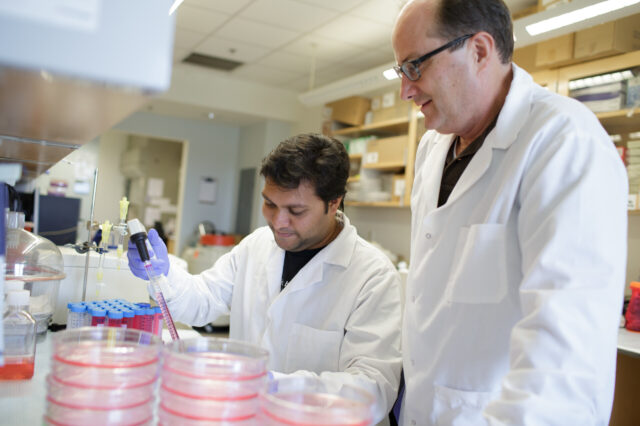Definition
Hepatocellular carcinoma is cancer that starts in the liver.
Alternative Names
Primary liver cell carcinoma; Tumor - liver; Cancer - liver; Hepatoma
Causes
Hepatocellular carcinoma is the most common type of liver cancer. It occurs more often in men than women. It is most often diagnosed in people age 50 or older.
Hepatocellular carcinoma is not the same as metastatic liver cancer. This type of cancer starts in another organ (such as the breast or colon) and spreads to the liver.
In most cases, the cause of hepatocellular liver cancer is long-term damage and scarring of the liver (cirrhosis). Cirrhosis may be caused by:
People with hepatitis B or C are at high risk for liver cancer, even if they do not develop cirrhosis.
Symptoms
Symptoms of liver cancer may include any of the following:
- Abdominal pain or tenderness, especially in the upper-right part
- Easy bruising or bleeding
- Enlarged abdomen (ascites)
- Yellow skin or eyes (jaundice)
- Unexplained weight loss
Exams and Tests
The health care provider will perform a physical exam and ask about your symptoms. The physical exam may show an enlarged, tender liver or other signs of cirrhosis.
If the provider suspects liver cancer, tests that may be ordered include:
Some people at risk for liver cancer may get regular blood tests and ultrasounds to see if tumors are developing.
A biopsy of the tumor must be done to diagnose hepatocellular carcinoma.
Treatment
Treatment depends on how advanced the cancer is.
Surgery may be done if the tumor has not spread. Before surgery, the tumor may be treated with chemotherapy to reduce its size. This is most often done by delivering the medicine straight into the liver with a tube (catheter).
Radiation treatments in the area of the cancer may also be helpful.
Ablation is another method that may be used. Ablate means to destroy. Types of ablation include using:
- Radio waves or microwaves
- Ethanol (an alcohol) or acetic acid (vinegar)
- Extreme cold (cryoablation)
A liver transplant may be recommended.
If the cancer can't be surgically removed or has spread outside the liver, there is usually no chance for long-term cure. Treatment instead focuses on improving and extending the person's life. Treatment in this case may use targeted therapy with drugs that can be taken as pills. Newer immunotherapy drugs may also be used.
Support Groups
You can ease the stress of illness by joining a cancer support group. Sharing with others who have common experiences and problems can help you not feel alone.
Outlook (Prognosis)
If the cancer can't be completely treated, the disease is usually fatal. But survival can vary, depending on how advanced the cancer is and how successful treatment is.
When to Contact a Medical Professional
Contact your provider if you develop ongoing abdominal pain, especially if you have a history of liver disease.
Prevention
Preventive measures include:
- Preventing and treating viral hepatitis may help reduce your risk. Childhood vaccination against hepatitis B may reduce the risk for liver cancer in the future.
- Not drinking alcohol in excess.
- Screening for liver cancer in people with certain types of hemochromatosis (iron overload).
- Screening for liver cancer in people who have hepatitis B or C or cirrhosis.
References
Abou-Alfa GK, Jarnagin W, El Dika I, et al. Liver and bile duct cancer. In: Niederhuber JE, Armitage JO, Kastan MB, Doroshow JH, Tepper JE, eds. Abeloff's Clinical Oncology. 6th ed. Philadelphia, PA: Elsevier; 2020:chap 77.
Di Bisceglie AM, Befeler AS. Hepatic tumors and cysts. In: Feldman M, Friedman LS, Brandt LJ, eds. Sleisenger and Fordtran's Gastrointestinal and Liver Disease. 11th ed. Philadelphia, PA: Elsevier; 2021:chap 96.
National Cancer Institute website. Adult primary liver cancer treatment (PDQ) - health professional version. www.cancer.gov/types/liver/hp/adult-liver-treatment-pdq. Updated August 23, 2021. Accessed November 16, 2021.
National Comprehensive Cancer Network website. NCCN clinical practice guidelines in oncology: hepatobiliary cancers. Version 5.2021. www.nccn.org/professionals/physician_gls/pdf/hepatobiliary.pdf. Updated September 21, 2021. Accessed November 16, 2021.





